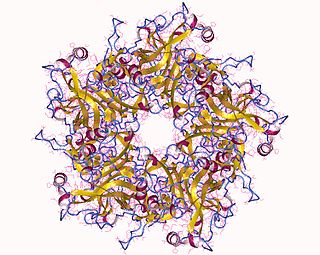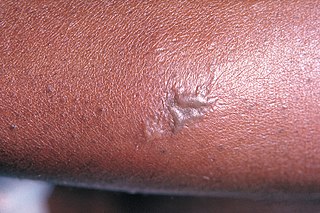History
In 1913, at a conference in Buffalo, New York, with the advice of John D. Rockefeller Jr., two social hygiene associations, the American Vigilance Association and the American Federation for Sex Hygiene, dedicated to fighting prostitution and venereal disease, joined to form the American Social Hygiene Association. [1] [2] In 1914, ASHA established its national headquarters in New York City. Founders and supporters included Charles Eliot, president of Harvard University; Jane Addams of Chicago's Hull House; Edward Keyes Jr., M.D.; Dr. Thomas N. Hepburn, leader of the Connecticut social hygiene movement; Grace Dodge, philanthropist; John D. Rockefeller Jr., initial financial contributor; and Dr. William Freeman Snow, Stanford University professor and secretary of the California State Board of Health.[ citation needed ]
World War I
ASHA's early work focused on education and awareness efforts within the armed forces. ASHA worked with the US War Department during World War I when VD occurrences surged among soldiers. Their efforts included educating soldiers about venereal diseases and their transmission and attempting to eliminate prostitution, which was believed to be the primary vehicle for VD transmission among the armed forces. ASHA was successful in shutting down many of the prostitution rings that traditionally surrounded military bases. Due to its contribution to the war effort, ASHA gained national attention and succeeded in creating public awareness of VD.[ citation needed ]
Between the wars
During the 1920s, ASHA served as a central coordinator for the local or regional committees, doctors, public health officials, and social welfare agencies that were combating sexually transmitted infections. In addition, ASHA published the Journal of Social Hygiene and the Social Hygiene Bulletin, conducted studies on the prevalence of syphilis, undertook surveys on VD, published synopses of laws concerning prostitution, and supported legislation that required a premarital exam for syphilis. The program also promoted character and sex education as a means of preventing the spread of STIs. The ASHA educational program emphasized preparation for a wholesome family life, avoiding VD, and physical as well as moral fitness. [3]
ASHA had developed into a mature organization by the 1930s with an effective network of supporting local organizations. ASHA also was involved in cooperative projects with a variety of organizations. In a single year, ASHA collaborated with the Federal Council of Churches and the National Congress of Parents and Teachers to promote sex education programs and materials; provided leadership for efforts by the White House Conference on Child Health and Protection to consider the social hygiene elements of child health; conducted institutes for public health nurses under the auspices of the National Organization of Public Health Nursing; and provided data to the U.S. Bureau of Indian Affairs in preparation for Indian Health Programs. [ citation needed ]
World War II

During World War II, ASHA fulfilled a role reminiscent of its work during World War I, serving on the VD Coordinating Committee for the US military and working against prostitution. ASHA's efforts contributed to a 50% drop in VD infection rates in the military during the first years of the war. In 1944, the military began using penicillin as a cure for syphilis and by the late 1950s it was believed that syphilis was no longer a serious health threat. As a result, the Journal of Social Hygiene discontinued publication.[ citation needed ]
Kinsey era
The release of the Kinsey reports on sexual behavior in 1948 and 1953 created national controversy. ASHA played a prominent role in the debate, organizing a national conference to bring together leading authorities in the fields of psychology, statistics, education, medicine, law, religion, anthropology and sociology to exchange views as to the significance of Kinsey's new information. The goal was to look at the information as scientific data instead of pornography. As Walter Clark, ASHA president from 1937 to 1951, commented, "The truth never harms ... And it seems reasonable to hope that when today's older generation, conditioned against frankness in sex matters, passes away and today's youth takes over tomorrow's world, the truth about sex shall indeed make them free—free of the diseases, the exploitations, the ignorance and superstitions which for ages have burdened and blighted society."[ citation needed ]
Also in the 1950s, ASHA began to distribute a comprehensive annual questionnaire to health officers across the country. The responses, tabulated by ASHA and analyzed by the Centers for Disease Control and Prevention, were published annually as Today's VD Control Problem, continuing under ASHA auspices until 1975. Today's VD Control Problem provided the statistical basis for testimony before Congress, as ASHA returned year after year to urge adequate federal appropriations for STD control.[ citation needed ]
The 1960s and 1970s
As ASHA began to recognize that the STD issue connected with other issues, it reflected its broader approach in a name change, moving from American Social Hygiene Association to American Social Health Association in 1960. Among the issues of concern identified by ASHA was the link between STDs and drug use. In 1961 ASHA launched a new program that was the first to focus on the prevention of narcotic addiction and the treatment and rehabilitation of drug addicts. The agency evaluated existing programs, issued position papers and informational booklets, maintained a clearinghouse, and sponsored four community-based pilot projects. [ citation needed ]
By the 1970s, though, additional novel problems led to soaring STD rates, including the sexual revolution, more international travel, gay liberation, birth control for women, and increasing drug use. Scientists were also recognizing more sexually transmitted pathogens, and viral STDs were making an appearance as well, from herpes simplex virus (HSV) to human papillomavirus (HPV). ASHA's public outreach efforts in this era included the creation of the Herpes Resource Center in 1979, the first program in the U.S. for people living with a viral STD. ASHA also established the National VD Hotline, where trained volunteers offers scientifically accurate information and support. ASHA also launched its first modern public awareness campaign, VD is For Everybody. [4] Working with the National Advertising Council, ASHA called attention to the alarming increase in the number of STDs by means of radio, television, and print public service announcements.[ citation needed ]
During the 1980s, ASHA continued to educate the public about sexually transmitted infections, primarily by means of telephone information and referral hot-lines, such as the National STD Hotline and the National AIDS Hotline. ASHA established the latter hotline in 1986, at that time the largest health-related hotline in the world. By the 1990s, the hotline was answering more than 1.5 million calls per year. The association also continued to advocate for public policies to combat STDS and increased funding for research. The identification of the AIDS virus added a new area of concern to the association's fight against sexually transmitted infections.[ citation needed ]










